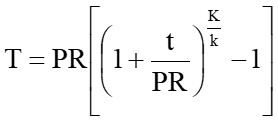Exception to Section 160.4(d)3: Boilers with steady state full-load thermal combustion efficiency 90 percent or higher.
Exception 1 to Section 160.4(e): Piping that penetrates framing members shall not be required to have pipe insulation for the distance of the framing penetration. Piping that penetrates metal framing shall use grommets, plugs, wrapping or other insulating material to ensure that no contact is made with the metal framing. Insulation shall abut securely against all framing members.
Exception 2 to Section 160.4(e): Piping installed in interior or exterior walls shall not be required to have pipe insulation if all of the requirements are met for compliance with quality insulation installation (QII) as specified in Reference Residential Appendix RA3.5.
Exception 3 to Section 160.4(e): Piping surrounded with a minimum of 1 inch of wall insulation, 2 inches of crawl space insulation or 4 inches of attic insulation shall not be required to have pipe insulation.
| Fluid Operating Temperature Range (°F) | Insulation Conductivity (Btu·in/h·ft2 °F) | Insulation Conductivity Mean Rating Temp. (°F) | Nominal Pipe Diameter (in inches)< 1 | Nominal Pipe Diameter (in inches) 1 to < 1.5 | Nominal Pipe Diameter (in inches) 1.5 to < 4 | Nominal Pipe Diameter (in inches) 4 to < 8 | Nominal Pipe Diameter (in inches) 8 and larger |
| 105-1401 | 0.22-0.28 | 100 | 1.0 (R 7.7) | 1.5 (R 12.5) | 2.0 (R 16) | 2.0 (R 12.5) | 2.0 (R 11) |
Footnote to TABLE 160.4-A:
1 Multifamily and hotel/motel domestic hot water systems with water temperature above 140°F shall use the row in table 120.3-A for the applicable water temperature.
- Pipe and appurtenance insulation exposed to weather shall be protected by a cover suitable for outdoor service. The cover shall be water retardant and provide shielding from solar radiation that can cause degradation of the material. Appurtenance insulation covers shall be removable and able to be reinstalled. Adhesive tape shall not be used to provide this protection.
- Pipe insulation covering chilled water piping and refrigerant suction piping located outside the conditioned space shall include, or be protected by, a Class I or Class II vapor retarder. All penetrations and joints shall be sealed.
- Pipe insulation buried below grade must be installed in a waterproof and noncrushable casing or sleeve.



